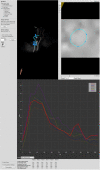Heart applications of 4D flow
- PMID: 32968665
- PMCID: PMC7487367
- DOI: 10.21037/cdt.2020.02.08
Heart applications of 4D flow
Abstract
Four-dimensional (4D) flow sequences are an innovative type of MR sequences based upon phase contrast (PC) sequences which are a type of application of Angio-MRI together with the Time of Flight (TOF) sequences and Contrast-Enhanced Magnetic Resonance Acquisition (CE-MRA). They share the basic principles of PC, but unlike PC sequences, 4D flow has velocity encoding along all three flow directions and three-dimensional (3D) anatomic coverage. They guarantee the analysis of flow with multiplanarity on a post-processing level, which is a unique feature among MR sequences. Furthermore, this technique provides a completely new level to the in vivo flow analysis as it allows measurements in never studied districts such as intracranial applications or some parts of the heart never studied with echo-color-doppler, which is its sonographic equivalent. Furthermore, this technique provides a completely new level to the in vivo flow analysis as it allows accurate measurement of the flows in different districts (e.g., intracranial, cardiac) that are usually studied with echo-color-doppler, which is its sonographic equivalent. Of note, the technique has proved to be affected by less inter and intra-observer variability in several application. 4D-flow basic principles, advantages, limitations, common pitfalls and artefacts are described. This review will outline the basis of the formation of PC image, the construction of a 4D-flow and the huge impact the technique is having on the cardiovascular non-invasive examination. It will be then studied how this technique has had a huge impact on cardiovascular examinations especially on a central heart level.
Keywords: 4D flow; Quantitative MRI; angio-MRI; cardiac MRI.
2020 Cardiovascular Diagnosis and Therapy. All rights reserved.
Conflict of interest statement
Conflicts of Interest: All authors have completed the ICMJE uniform disclosure form (available at http://dx.doi.org/10.21037/cdt.2020.02.08). The series “Advanced Imaging in The Diagnosis of Cardiovascular Diseases” was commissioned by the editorial office without any funding or sponsorship. LS served as the unpaid Guest Editor of the series and serves as an unpaid editorial board member of Cardiovascular Diagnosis and Therapy from July 2019 to June 2021. FC serves as an unpaid editorial board member of Cardiovascular Diagnosis and Therapy from July 2019 to June 2021. The authors have no other conflicts of interest to declare.
Figures




References
-
- Carr HY, Purcell EM. Effects of diffusion on free precession in nuclear magnetic resonance experiments. Phys Rev 1954;94:30-8. 10.1103/PhysRev.94.630 - DOI
Publication types
LinkOut - more resources
Full Text Sources
